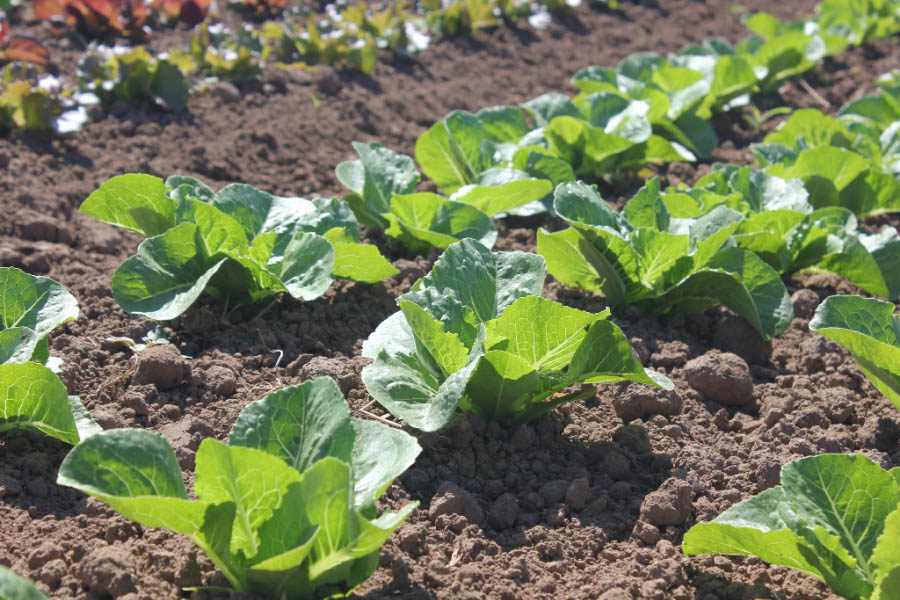The share of organic produce that’s both eaten and grown locally is relatively small — but the amount of organic acreage grown in the state is growing.
As farms across Oregon begin harvesting late-spring crops like rhubarb, onions and strawberries, a new state-funded report shows Oregon is in a strong position to be a leader in organic agriculture.
According to the Oregon Organic Market Assessment — one of five state-funded reports on emerging industries — only 10-16% of organic food products reaching Oregonians comes from organic Oregon farms. But the report illustrates significant potential for growth in production, manufacturing, and sales, along with multiple benefits that come with organic agriculture, from economic development for rural communities to increased food security and resilience in the face of ongoing climate change.
Organic food sales topped $60 billion nationwide for the first time last year. Though inflation has led some shoppers to avoid the extra cost of organic items, the sector continues to grow.
Oregon has always been a leader in that growth. In 1973, it was the first state to pass legislation regulating organic food. Over the last 15 years, the state’s certified organic acreage has doubled. Today, Oregon is sixth in the nation for certified organic cropland with 228,100 acres.
Oregon’s infrastructure can support continued growth. Currently organic food manufacturing is growing faster than conventional food manufacturing, and there’s enough organic raw material available for near-term expansion.
As farmers grapple with the worsening challenges of climate change, the potential to shift more land and production from conventional to organic food products seems not just smart but necessary. One of the key points of the report is that “public and environmental health costs from agriculture are greatly reduced by organic practices.”
The labeling of organic products depends on practices “that support the cycling of on-farm resources, promote ecological balance, and conserve biodiversity in accordance with the USDA organic regulations,” according to the Oregon Department of Agriculture, all of which align with initiatives for mitigating the impacts of climate change. While the pesticides, synthetic fertilizers, and sewage sludge that often accompany conventional agriculture can all negatively impact the environment, organic agriculture must maintain or improve air and water quality, while conserving surrounding ecosystems.
Organic agricultural practices also release lower levels of greenhouse gas emissions. Increasing organic agriculture would contribute positively to the state’s current goal to reduce GHG emissions to 80% of 1990 levels by 2050. Organic farmland can even become a carbon sink.
The report also found that agriculture communities with higher percentages of organic operations had lower poverty rates and higher median household incomes.
One of the key findings of the report is the potential for organics to serve as a social justice initiative. Farmworkers are routinely exposed to much higher levels of pesticides compared to the consumer, and reducing their use protects those workers from dangerous health impacts, which include acute pesticide poisoning, headaches, nausea, and seizures. And increasing availability of healthy fruits and vegetables can increase food security for Oregon’s most vulnerable communities.
“I often hear that organics are only for rich white people,” says Amy Wong, board chair at the Oregon Organic Coalition. “But we’re seeing that’s not the case.”
A recent study from the Organic Trade Association, which the report draws from, found that “14% of dedicated organic consumers identify as Black, 25% as Hispanic, and 10% as Asian; each group exceeded its representation in the overall US population.”
Alongside the myriad benefits outlined in the report, there are significant barriers to consider as well.
Organic agriculture is more labor-intensive, and the expenses of farm labor have increased by 42% in Oregon since 1997 (according to the 2023 US Census Bureau). Profit margins were already slim for most farmers, and the recent adoption of House Bill 4002, which enforces new overtime pay for agricultural workers, made that margin slimmer.
The many steps to transition to organic production is prohibitive to many farmers facing slim profit margins and the increasing challenges of a changing climate.
“The process is extremely rigorous,” says Wong. Soil fertility and pest management are more challenging when you’re meeting the standards required of organic labeling, and many farmers don’t have the time or capital to invest in those new systems.
Wong says education will be key in promoting the continuing growth of organic agriculture in Oregon and in supporting farmers who choose to do so.
Several OOC initiatives to educate and promote organics in Oregon were put on hold during the pandemic, like the Organic Grows a Better Oregon Advocacy Day at the State Capitol and the OOC Excellence Awards, both of which the OOC plans to bring back soon.
“There is a lot more we can do to educate,” says Wong. “This assessment will be a launching point. We knew all of this was true, and now we have the validation.”




